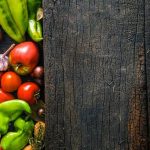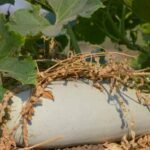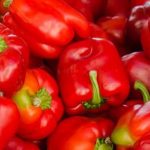Wisconsin vegetable gardening has been a time-honored tradition in the state, with its rich soil and diverse climate providing an ideal environment for growing a wide variety of vegetables. In recent years, the practice of vegetable gardening in Wisconsin has evolved, incorporating modern techniques and sustainable practices to maximize success. Whether you’re a novice or experienced gardener, there are endless opportunities to explore the thriving world of Wisconsin vegetable gardening.
From its traditional roots to the latest trends, this article will take you on a journey through the fascinating history of vegetable gardening in Wisconsin. We will explore the best vegetables to grow in the state’s unique climate and provide tips and tricks for overcoming challenges and ensuring a bountiful harvest.
Additionally, we will delve into the essential steps for soil preparation and offer a seasonal guide for planting vegetables throughout the year. Lastly, we will highlight sustainable practices and connect you with valuable resources available to Wisconsin vegetable gardeners.
As we embark on this exploration of Wisconsin vegetable gardening, prepare to be inspired by the rich history, expert advice, and community support that await you in this flourishing realm of horticulture. Whether you have acres of land or limited space for container gardening, there is something for everyone in the vibrant world of Wisconsin vegetable gardening. So let’s roll up our sleeves and dig into this exciting endeavor together.
A Brief History of Vegetable Gardening in Wisconsin
Vegetable gardening has been a long-standing tradition in Wisconsin, dating back to the early settlers who relied on their garden for sustenance. Over time, the practice of vegetable gardening has evolved from traditional methods to modern practices, with a focus on sustainability and maximizing crop yields.
Here are some key points to understand the evolution of vegetable gardening in Wisconsin:
- Traditional Methods: In the early days of Wisconsin’s history, vegetable gardening was essential for survival. Settlers would plant crops such as corn, beans, squash, and root vegetables using simple hand tools and natural fertilizers. The focus was on subsistence farming to feed their families throughout the year.
- Modern Practices: With advancements in agriculture and technology, modern vegetable gardening in Wisconsin has become more efficient and productive. Gardeners now have access to a wide variety of plant varieties bred specifically for the state’s climate. Additionally, tools such as irrigation systems and organic fertilizers have made it easier to maintain healthy gardens.
As the tradition of vegetable gardening continues to thrive in Wisconsin, it is essential for gardeners to understand the historical significance of this practice while embracing modern techniques for sustainable and bountiful harvests. By learning from both traditional wisdom and modern innovations, gardeners can ensure success in their Wisconsin vegetable gardening endeavors.
The Best Vegetables to Grow in Wisconsin
Wisconsin is a great state for vegetable gardening, as its climate provides a perfect environment for many types of vegetables to thrive. When planning a vegetable garden in Wisconsin, it’s essential to choose the right vegetables that can withstand the state’s climate and soil conditions. Here are some of the best vegetables to grow in Wisconsin:
Root Vegetables
Root vegetables such as carrots, beets, and radishes are well-suited for Wisconsin’s climate. They can withstand the cool temperatures and are relatively easy to grow. Root vegetables also do well in the state’s fertile soil, making them an ideal choice for Wisconsin gardeners.
Leafy Greens
Leafy greens like lettuce, spinach, and kale flourish in Wisconsin’s cooler spring and fall seasons. These vegetables are not only nutritious but also relatively low maintenance, making them a popular choice for home gardeners in Wisconsin.
Tomatoes
Despite Wisconsin’s shorter growing season, tomatoes can still thrive if planted and cared for properly. There are many varieties of tomatoes that have been specifically bred to tolerate cooler climates, making them a great option for Wisconsin vegetable gardening.
In addition to these vegetables, other suitable options for Wisconsin vegetable gardening include peppers, peas, green beans, and various herbs. By selecting the right mix of vegetables that are well-suited to the state’s climate and soil conditions, gardeners can enjoy a bountiful harvest throughout the growing season.
Wisconsin Vegetable Gardening Tips and Tricks
When it comes to Wisconsin vegetable gardening, there are certain challenges that gardeners often face due to the state’s unique climate and soil conditions. However, with the right tips and tricks, you can overcome these challenges and maximize your success as a gardener. Here are some essential tips for thriving in Wisconsin vegetable gardening:
1. Choose the Right Varieties: In order to thrive in Wisconsin’s climate, it’s important to choose vegetable varieties that are well-suited for the region. Some vegetables that do well in Wisconsin include tomatoes, peppers, carrots, beans, peas, and potatoes. These varieties have been proven to withstand the state’s weather conditions and soil types.
2. Extend the Growing Season: Wisconsin’s shorter growing season can be a challenge for vegetable gardeners. To overcome this challenge, consider using season extenders such as cold frames, row covers, or greenhouse structures. These tools can help protect your plants from frost and extend the growing season well into the fall.
3. Focus on Soil Health: The quality of your soil plays a crucial role in the success of your vegetable garden. Before planting, make sure to test your soil to determine its pH levels and nutrient content. Adding organic matter such as compost or aged manure can improve soil fertility and structure for healthy plant growth.
By implementing these tips and tricks, you can effectively navigate the challenges of Wisconsin vegetable gardening and achieve bountiful harvests throughout the growing season.
The Importance of Soil Preparation for Wisconsin Vegetable Gardening
Wisconsin soil is known for its rich fertility, but successful vegetable gardening in the state still requires proper soil preparation. The first step in preparing your soil is to test its pH level. This will help you determine if any amendments are needed to create an optimal growing environment for your vegetables. Many gardeners in Wisconsin choose to add organic matter such as compost or well-rotted manure to improve soil structure and fertility.
It’s also important to consider the texture of the soil. Most vegetables thrive in well-drained, loamy soil, so if your soil is heavy with clay, you may need to work in sand or other organic materials to improve drainage. Additionally, incorporating a balanced fertilizer into the soil before planting can provide essential nutrients for healthy plant growth.
In Wisconsin, it’s crucial to prepare your soil early in the season before planting. By taking the time to properly prepare your soil, you can ensure that your vegetable garden has the best chance of success, leading to a bountiful harvest of fresh produce throughout the growing season.
| Soil Preparation Step | Importance |
|---|---|
| Test Soil pH | Determines necessary amendments for optimal growing conditions |
| Add Organic Matter | Improves soil structure and fertility |
| Consider Soil Texture | Addition of sand or organic materials may be necessary for improved drainage |
| Incorporate Balanced Fertilizer | Provides essential nutrients for healthy plant growth |
Seasonal Guide to Wisconsin Vegetable Gardening
Spring
In the spring, Wisconsin gardeners have the opportunity to plant a variety of vegetables. Cool-season crops such as lettuce, spinach, kale, and peas can be planted early in the season when the soil is workable. Root vegetables like carrots, radishes, and beets also thrive when planted in the spring.
Summer
As the weather warms up, Wisconsin gardeners can transition to warm-season crops such as tomatoes, peppers, cucumbers, and zucchinis. These vegetables require higher temperatures to grow successfully and are best planted after the last frost date has passed. Additionally, legumes like beans and corn can be planted in the summer months for a bountiful harvest.
Fall
While some may think that vegetable gardening ends with the arrival of fall, there are still plenty of options for Wisconsin gardeners. Cool-season crops that were planted in the spring can be sown again in late summer for a fall harvest. Additionally, hardy vegetables like Brussels sprouts, broccoli, and cauliflower thrive in cooler temperatures and can be planted for a late-season yield.
With this seasonal guide to Wisconsin vegetable gardening, gardeners can make informed decisions about what to plant throughout the year. By understanding which vegetables are best suited for each season and taking into account the state’s climate, gardeners can ensure successful harvests all year round.
Sustainable Practices in Wisconsin Vegetable Gardening
Wisconsin vegetable gardening enthusiasts are increasingly turning to sustainable and eco-friendly practices to minimize their environmental impact while growing healthy and abundant crops. By adopting sustainable techniques, gardeners can conserve resources, reduce waste, and support the local ecosystem.
One popular approach to sustainable gardening in Wisconsin is the use of composting. Composting involves recycling organic kitchen and yard waste into nutrient-rich soil amendments.
This not only reduces the amount of waste going to landfills but also enriches the soil, improving its structure and fertility. Many Wisconsin gardeners also practice crop rotation, a method that helps prevent disease buildup in the soil and maintains soil health by alternating plant families in different areas of the garden from year to year.
Another key aspect of sustainable vegetable gardening in Wisconsin is water conservation. Gardeners often utilize rain barrels to collect water for irrigation, reducing their reliance on municipal water supplies during dry periods. Drip irrigation systems are also popular as they deliver water directly to the base of plants, minimizing evaporation and runoff.
In addition to these practices, many Wisconsin gardeners are embracing organic pest control methods such as companion planting and introducing beneficial insects to their gardens. By prioritizing sustainability, these gardeners are not only contributing to a healthier environment but also enjoying more bountiful harvests.
| Sustainable Practices | Benefits |
|---|---|
| Composting | Reduces waste, adds nutrients to the soil |
| Water Conservation | Reduces reliance on municipal water supplies |
| Organic Pest Control | Minimizes chemical usage, supports beneficial insects |
Wisconsin Vegetable Gardening Communities and Resources
In conclusion, Wisconsin vegetable gardening offers a rich and rewarding experience for gardeners of all levels. From its traditional roots to modern practices, the state has a long history of cultivating a variety of vegetables in its climate. With the right knowledge and resources, gardeners can thrive in Wisconsin while making sustainable choices that benefit the environment.
One of the key aspects of successful Wisconsin vegetable gardening is connecting with communities and utilizing available resources for support and guidance. Whether it’s joining a local gardening club, attending workshops, or accessing online forums, there are numerous ways for gardeners to connect with like-minded individuals and learn from each other’s experiences. The sense of community provides valuable opportunities for sharing knowledge, troubleshooting challenges, and staying motivated throughout the gardening season.
Additionally, tapping into available resources such as university extension programs, seed libraries, and sustainable gardening initiatives can further enhance the gardening experience. By taking advantage of these resources, Wisconsin vegetable gardeners can access expert advice, obtain high-quality seeds and plants suitable for the state’s climate, and stay informed about best practices for sustainable gardening. Ultimately, by embracing community connections and utilizing available resources, gardeners can foster a thriving vegetable gardening culture in Wisconsin.
Frequently Asked Questions
What Vegetables Should Not Be Planted Next To?
Some vegetables should not be planted next to each other due to the risk of pests and diseases. For example, tomatoes and potatoes should not be planted near each other because they are both susceptible to similar diseases and pests.
What Month Should I Plant My Vegetable Garden?
The best month to plant a vegetable garden depends on the specific climate and location. In general, planting in late spring or early summer is ideal for most vegetables. This allows them to establish before the heat of summer or before the first frost in cooler climates.
Can You Grow Vegetables in the Winter in Wisconsin?
Yes, it is possible to grow vegetables in the winter in Wisconsin with the use of cold frames, low tunnels, or greenhouses. Cold-hardy vegetables like kale, spinach, carrots, and Brussels sprouts can thrive in Wisconsin’s winter conditions with proper protection.

If you’re looking to get into vegetable gardening, or are just looking for some tips on how to make your current garden better, then you’ve come to the right place! My name is Ethel and I have been gardening for years. In this blog, I’m going to share with you some of my best tips on how to create a successful vegetable garden.





